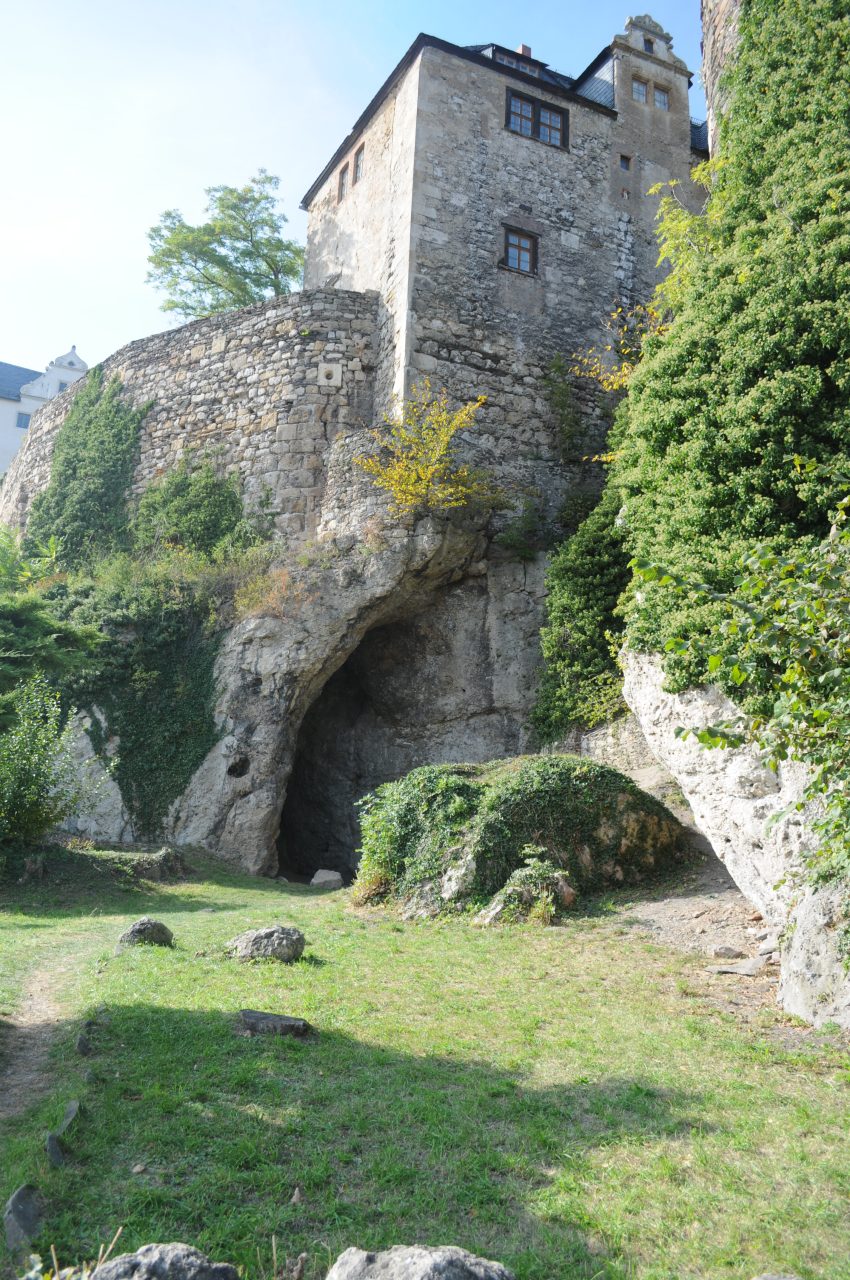An international research project has discovered the arrival of Homo sapiens in cold northern latitudes took place several thousand years before Neanderthals disappeared in southwest Europe.
The research team led by colleagues at Kent’s School of Anthropology and Conservation and the Max Planck Institute for Evolutionary Anthropology in Leipzig, Germany reports the discovery of Homo sapiens fossils from the cave site Ilsenhöhle in Ranis, Germany. Directly dated to approximately 45,000 years ago, these fossils are associated with elongated stone points partly shaped on both sides (known as partial bifacial blade points), which are characteristic of the Lincombian-Ranisian-Jerzmanowician (LRJ). This archaeological technocomplex is temporally situated between the Neanderthal-associated Middle Palaeolithic and the Upper Palaeolithic made by H. sapiens. Further, at Ranis, the LRJ also contains bifacial leaf points, which are fully worked across both sides, and have been interpreted, by some researchers as evidence for a link with local Neanderthals. It was the first time the full eight-metre sequence of cave site Ilsenhöhle had been re-excavated since the 1930s.
The new discoveries published in a series of three new research papers document the earliest known H. sapiens fossils in Central and northwest Europe and reveal for the first time the makers of the LRJ. The partial bifacial blade points found at Ranis – one of the main type-sites of the LRJ – have also been discovered at other localities across Europe, from Moravia and eastern Poland across to the British Isles and can now be linked to an early arrival of small groups of Homo sapiens in northwest Europe several thousand years before Neanderthals disappeared in southwest Europe. The three studies describe the Homo sapiens fossils from Ilsenhöhle at Ranis and their associated context (Mylopotamitaki et al.), the diet and lifeways of these first pioneers (Smith et al.), and the environmental conditions they faced in Central and northwest Europe (Pederzani et al.).
Thousands of highly fragmented pieces of bone were recovered at the cave site Ilsenhöhle revealing patterns of the site use and human diet. Moving in small groups, they shared their environment and sites with large carnivores, like hyenas, and they manufactured elaborately crafted leaf-shaped stone tools. Dr Geoff Smith, lead author of one of the three studies and a zooarchaeologist based at Kent and Max Planck Institute for Evolutionary Anthropology said: ‘Zooarchaeological analysis shows that the Ranis cave was used intermittently by denning hyaenas, hibernating cave bears, and small groups of humans. While these humans only used the cave for short periods of time, they consumed meat from a range of animals, including reindeer, woolly rhinoceros, and horses. Although the bones were broken into smaller pieces, they were exceptionally well preserved and allowed us to apply the latest cutting-edge methods from archaeological science, proteomics and genetics.’
This comprehensive study, integrating archaeological excavation, morphological and proteomic taxonomic identification, mitochondrial DNA analysis, radiocarbon dating of newly excavated archaeological material and of human remains, zooarchaeology, and isotope analysis marks a significant milestone in understanding the initial incursions of Homo sapiens into Europe north of the Alps during the Middle to Upper Palaeolithic transition. Furthermore, the team found that Homo sapiens ventured into Europe under severe cold climatic conditions.
More of the research findings and methodology used can be read in the research paper series:
Mylopotamitaki, D., Weiss, M., Fewlass, H. et al. Homo sapiens reached the higher latitudes of Europe by 45,000 years ago. Nature (2024). https://doi.org/10.1038/s41586-023-06923-7
Smith, G.M., Ruebens, K., Zavala, E.I. et al. The ecology, subsistence and diet of ~45,000-year-old Homo sapiens at Ilsenhöhle in Ranis, Germany. Nat Ecol Evol (2024). https://doi.org/10.1038/s41559-023-02303-6
Pederzani, S., Britton, K., Trost, M. et al. Stable isotopes show Homo sapiens dispersed into cold steppes ~45,000 years ago at Ilsenhöhle in Ranis, Germany. Nat Ecol Evol (2024). https://doi.org/10.1038/s41559-023-02318-z

Analysis of over 1000 animal bones from Ranis showed that early Homo sapiens processed the carcasses of deer but also of carnivores, including wolf. © Geoff M. Smith, License: CC-BY-ND 4.0.

Stone tools from the LRJ at Ranis. 1) partial bifacial blade point characteristic of the LRJ; 2) at Ranis the LRJ also contains finely made bifacial leaf points. © Josephine Schubert, Museum Burg Ranis, License: CC-BY-ND 4.0

